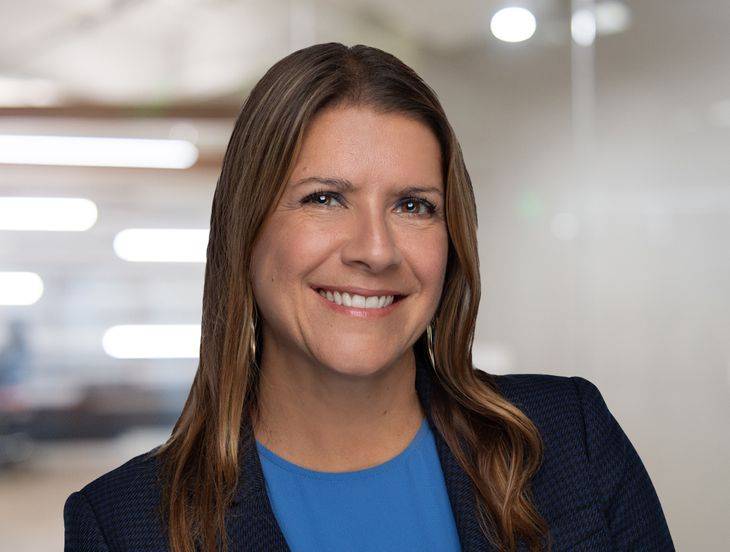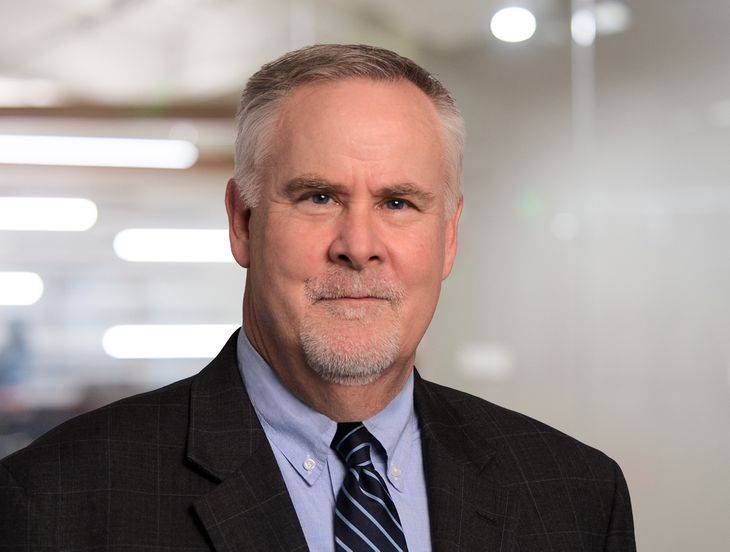5 Ways Employers Can Begin Preparing As The COVID-19 Vaccine Priority Order Is Revealed
Insights
12.22.20
The country breathed a collective sigh of relief last week when the first doses of the Pfizer-BioNtech COVID-19 vaccine were shipped out to all 50 states. Following shortly behind, the first doses of the Moderna vaccine were shipped out this week. Healthcare workers and long-term care residents were given priority to receive these first doses. But Americans will need to get into the queue for the later doses. With vaccine supplies limited, where will your employees fall in the line of priority? The answer to this question is not easily determined, as the recommendations from the experts continue to change. This article, however, will address the likely considerations and guidance that will be used in determining the priority for distribution of the vaccine, and provide five steps employers can take now to prepare for the next steps on the roll-out.
FDA Emergency Use Authorizations And The CDC Recommendation On Priority Distribution
On December 11, the U.S. Food and Drug Administration (FDA) issued an Emergency Use Authorization (EUA) for the Pfizer vaccine for adults. On December 20, the FDA issued an EUA for the Moderna vaccine for adults. Approval for children is anticipated to come later after further study. For now, reports indicate that vaccine shipment totals through January 2021 will include enough doses for about 20 million people, which is about 6% of the population. This will cover the highest priority group, which includes healthcare workers and long-term care residents. But the head of Operation Warp Speed, Dr. Moncef Slaoui, has provided an optimistic projection for completion of the process, stating:
Normally, with the level of efficacy we have – 95% - then 70% or so of the population being immunized would allow true herd immunity to take place. That is likely to happen somewhere in the month of May, something like that, based on our plans.
To begin this roll-out, the federal government has provided guidance with input from the state health agencies as to how many of these initial doses each state will receive (based on the state’s adult population). Then, each state will have the responsibility to determine the priority for distribution of the vaccinations to individuals in each state. Most all the states have submitted some type of proposed COVID-19 Vaccination Plan defining what their phases look like.
To help guide the states in making the decisions on priorities, the Centers for Disease Control and Prevention (CDC) has issued recommendations for distribution of the vaccine. The CDC’s Advisory Committee on Immunization Practices (ACIP) has released interim recommendations (and updates) as to how to prioritize distribution of the vaccine. In addition to the CDC guidance, additional recommendations on priority distribution have been provided by the National Academies of Sciences, Engineering and Medicine (NASEM) and the World Health Organization (WHO).
Phase 1a – Front-Line Healthcare Workers And Residents of Long-Term Care Facilities
All three organizations, and the states, have set Phase 1a of the vaccine to include front-line health personnel, along with residents of long-term care facilities. Some states, and the NASEM, have also determined that first responders should be included in phase 1a distribution. While there have been a few hitches, the states have started administering vaccinations to this group in all 50 states.
Because the distribution process takes some time, states have taken steps to sub-prioritize within these initial vaccine recipients. The sub-priorities may include moving to the back of the line those healthcare workers who have previously tested positive for COVID-19. Additionally, the state or employer may need to make additional plans and requirements within the workforce.
Phase 1b – Elderly Americans And “Frontline” Essential Workers
While there is some variance, Phase 1B as adopted by the states will focus on the elderly population and “frontline” essential workers. The ACIP recommends sub-phase 1b include persons over 75 years of age and “frontline” essential workers. The ACIP has clarified that the approximately 30 million “frontline” essential worker include: first responders (firefighters, police, etc.), educators (teachers, support staff, daycare), food and agriculture workers, manufacturing employees, corrections workers, U.S. Postal Service workers, public transit workers, and grocery store workers.
There ae some variances to this second phase of vaccine recipients as identified by the states. For example, the NASEM recommends that Phase 1b include people of all ages with high-risk medical conditions and comorbidities, while the WHO recommends only older adults at high-risk be included.
Phase 1c – Older Americans (Aged 65 to 74), Adults With High-Risk Medical Conditions, And “Other” Essential Workers
Only the ACIP has set out recommendations for Phase 1c of the vaccination roll-out. Under the recommended guidance, this phase would include persons 65 to 74 years old, persons 16 to 64 years old with high-risk medical conditions, and “other” essential workers. The ACIP distinguishes between the “frontline” essential workers noted above and “other” essential workers, identifying those “other” essential workers to include workers in the following services and industries: transportation and logistics, food service, shelter and housing or construction, financial industry, IT & communication, energy, media, legal, public safety (engineers), and water and wastewater.
If you are working in these sectors, the AICP defines “essential workers” as those who are essential to continue critical infrastructure and maintain the services and functions Americans depend on daily, and workers in those industries who cannot perform their duties remotely and must work in close proximity to others. Some of the states have already taken steps to determine which individuals and/or groups in their state will be considered essential for purposes of distribution of the vaccine. For instance, Pennsylvania has identified the following individuals as critical or essential workers.
- first responders;
- people who manufacture medical supplies, PPE, pharmaceuticals, vaccines, and “other essential products;
- people who conduct home/business visits for electrical assessments and repairs, gas supply assessments and repairs;
- meat processing and other food processing facility workers;
- workers serving people in congregate settings not included in Phase 1A, such as domestic violence shelters and correctional facilities; and
- teachers and school staff working directly with students.
Each state health agency will prioritize and sub-prioritize groups within these phases. The process is likely to be controversial, as there may be competition between groups of individuals (and employees) for priority status. This will have a more immediate impact on those states with a higher percentage of healthcare workers and long-term care residents. Some states, like Pennsylvania and Alabama, have already recommended that employers drill down further and sub-prioritize health care personnel, into “very-high,” “high,” and “medium” risk.
Regardless of the priority status, the initial vaccine distribution will be impacted by administrative and logistic issues, such as storage requirements, the need for two doses of the vaccine, and other factors. There also may be a limit on the number and types of facilities that have access to the vaccine.
Another factor will be which vaccine to distribute. Thus, states with a large rural population, like Colorado, have already requested that they be provided with doses of the Moderna vaccine for distribution, given that it is better suited for distribution to rural areas of the state.
Phase 2 and Phase 3 – Individuals Aged 16 to 64 (Not High Risk), Non-Essential Workers, and Others Not Covered In Earlier Phases (i.e., Everyone Else)
Phase 2 and Phase 3 of the vaccine roll-out is still in development. But these later phases are likely to come into focus as the states move through Phase 1 of the roll-out. NASEM and the WHO have made interim recommendations for Phase 2 and 3. A summary of these recommendations can be found here. It is anticipated that the expected criteria for distribution in Phase 2 and Phase 3 will likely include individuals 16 to 64 without high-risk medical conditions, non-essential workers, individuals in homeless shelters or group homes and staff working in such institutions, individuals incarcerated and staff who work in such settings, and other older adults not covered in earlier phases. These later phases may also include children as deemed appropriate after further testing and approval of the vaccine for their use.
There will also be additional criteria that the states will need to address in determining priority in the distribution of the vaccine. These criteria include consideration of distribution to those living in rural and hard-to-reach areas, and priorities for racial and ethnic minority populations who rely on local community health centers as opposed to large health systems. There will be additional concerns over segments of the population that will refuse the vaccine, and whether the government or employers will mandate vaccinations. It is likely that employers will play a critical role in the vaccination process, and therefore you should carefully consider your role in the priority process and state allocations.
What Employers Can Do Now To Prepare for Vaccinations
As noted above, most non-healthcare employees will be lower on the priority list for vaccination. Employers will need to be patient as the amount and timing of doses available to these employees remains uncertain. However, it is not too early to start making plans for how your company will handle the vaccination process. Here are five suggestions:
- Use this delay to develop a plan of action as a part of your vaccination policy and determine what resources will be made available to support your vaccination plan.
- Appoint a person or committee to be responsible for developing and overseeing the plan of action.
- Monitor the vaccine distribution plan websites of all states relevant to your operations (a compilation of state vaccine distribution plan links can be found here).
- Anticipate where your workforce fits into these state priority distribution plan, and communicate with the state health department about your workers’ priority.
- Consider whether you want to request or lobby for your workforce to be included in a priority designation or moved up in the priority list. You may want to contact your local political representatives, health officials, and industry organizations.
Conclusion
We will continue to monitor developments related to the new vaccines and related workplace questions that arise. Make sure you are subscribed to Fisher Phillips’ alert system to get the most up-to-date information. If you have questions about how to ensure that your vaccine policies comply with workplace and other applicable laws, visit our Vaccine Resource Center for Employers or contact any attorney on our FP Vaccine Subcommittee.
This Legal Alert provides an overview of developing workplace issues. It is not intended to be, and should not be construed as, legal advice for any particular fact situation.
Related People
-
- Raeann Burgo
- Partner
-
- Robert M. Robenalt
- Partner

